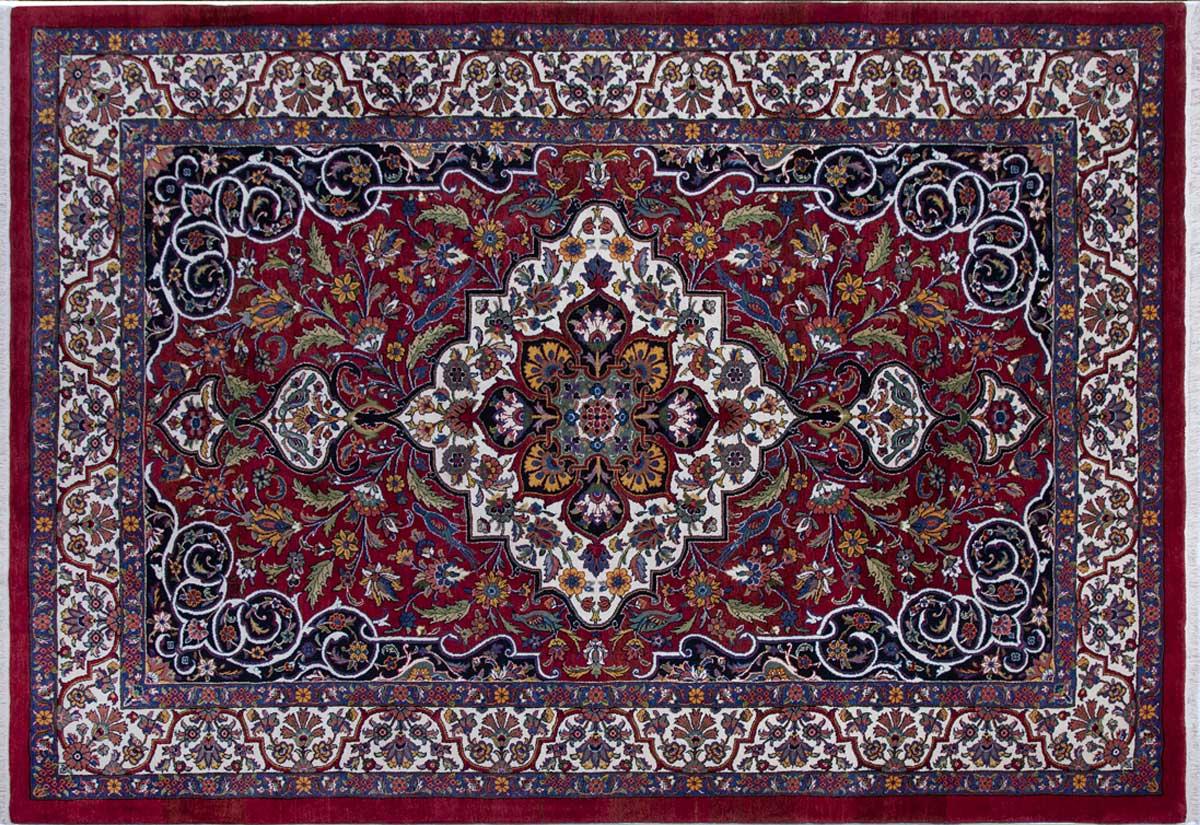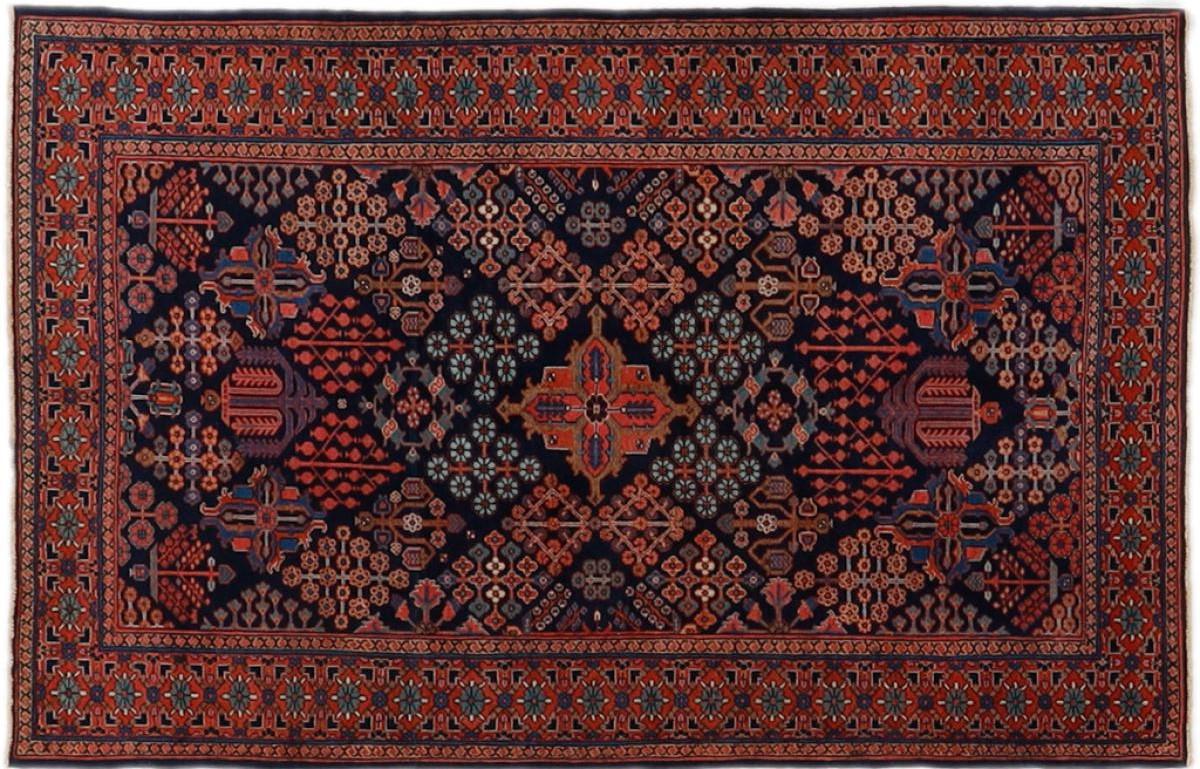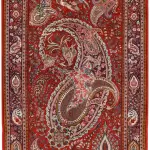Let's get to know Farahan's beautiful handwoven carpet
In this article, we are going to introduce you to the technical and appearance features of Farahan carpet. Farahan includes a large area between the cities of Arak, Tafarsh and Ashtian. This very old area has kept relics from the Medes until now. The art of carpet weaving apparently entered the Farahan plain very late, and its beginning probably dates back to the end of the 12th century. Since around 1254 AD, Farahan has become a well-known area for carpet exports due to the high demand of foreign markets. In the past, the texture of fringed carpets in the style of a broken branch and in a simple and free background, mostly in golden yellow color with a samouri border, as well as tree designs in a navy blue color text, were popular in Farahan. Today, Farahani weavers weave carpets and rugs in a miniature Herati design in a yellow-green background, along with other common designs in this region. Almost all the carpets that are woven in the Herati pattern in this region do not have a middle border.
Technical characteristics of tissue
In the following, we would like to examine the most important technical features of Farahan carpets. These include size, texture density, and weave type.
Texture density and dimensions in Farahan carpets
One of the factors affecting the quality of the carpet is the number of knots in the row (Rajshmar). The finer the texture of the carpet, that is, the higher the number of knots in each row, the better its quality and type. The density of knots in Farahan carpets is very high and sometimes it reaches 7000 knots per square meter. In terms of index, Farahan handwoven carpets usually have an index between 35 and 40.
The type of knotting and knotting in Farahan carpets
Chelekshi in Farahan carpets is done in Persian style, and the knot in the carpets of this region is usually Persian type or asymmetrical.
Farahan carpet dimensions
The dimensions of Farahan carpets have remained almost unchanged from the past to today, which mostly include the sizes of a cubit, a half cubit, and two cubits, and its sides are often sold in the market with a length of 1.5 to 3.5 meters. In Farahan, like in Sanandaj, they weave rugs in the shape of horse saddles. Carpets with medium texture of this area are known as Farahan-Mosul in the market. Farahan carpets were mostly produced for Persian nobles between 1870 and 1913 in one of the cities located in the north and northeast of Arak. The weavers used one weft to weave this type of carpet and they were flat in terms of weaving method. The size of those carpets was usually considered long and narrow or large just like the size of the room. Usually, Farahan carpet pattern was of Herati type or all covered with flowers and wavy leaves. Sarooq Farahan carpets are an exhibition of rich colors and usually the background of the carpets is covered with red color, indigo color was used around the medallions and borders, also green color was used for the subtle shading that can be seen in most of the designs. The colors were so bright and beautiful that there was no need to use silk.
Other features of Farahan carpet
Farahan carpet is famous for its tight texture and short pile, which is considered one of the important centers of carpet weaving in Arak. Farahan's fish design, bergamot design on pea or blue garlic background are famous. Sarouk Farahan carpets are sometimes called Sarouk because they use two wefts and are heavier; But technically, these carpets have more knots than Arak city, and the background of this type of carpet is usually blue or ivory, and its design usually has large fringes or full of tree and bird motifs. Both Farahan and Farahan-Sarooq carpets are declining in popularity compared to American Sarooq. American Sarooq rugs have a good reputation and are designed and woven at the request of American consumers. The coloring of the American sarouq carpet is usually blue and pinkish in which blue color is also visible and it is full of flower and plant motifs. These colors were chosen to be more compatible with wooden furniture.
Types of projects and the role of prominent subjects in Farahan region
Sarouk carpet is unique, one of the characteristics of Sarouk carpet, especially its old carpets, is the interesting quality in the choice of color, the choice of cream and azure color is of special value to them along with copper color.

Historical, mythological designs
The special designs implemented in this village include: designs of characters and historical works, views of buildings, historical and underground vessels and famous characters in which the images of kings and heroes may be seen.
Flower design
As it is clear from the name of this design, red flowers and petals show themselves throughout the work, and sometimes American and Mustofi bouquets are shown inside the vase or in the form of bergamot. Afshan design has various types, such as Afshan Slimi, Khataei, Bandi and Shah Abbasi.
Farang Lakh Taranj flower
A consolidated design that is effective in creating a new design inspired by various roles. including the bergamot screw branch, the potted bergamot, and the simple bottom slime band that can be mentioned.
spray plan
which has different types, Afshan Slimi, Khatai, Bandi and Shah Abbasi, which is of special value among designers and weavers.
Shah Abbasi's design is broken (broken branch)
This design is the same as the flowers of Shah Abbasi, but in the form of angular motifs, which are also called broken or broken branches. (Of course, Shah Abbasi's maps are also woven in contemporary years).
Mahi Farahan
It is one of the traditional motifs of Arak region, including Farahan, and it is considered one of the types of Mahi Dirham motifs. In this design, apart from the text, the image of a fish also decorates the borders and is accompanied by the image of a turtle or a lizard.
Robber fish
The design of Saroq fish or Saroq entangled fish also follows the general principles of fish pattern design, it is used in a small and delicate way, so that its elegance evokes the pattern of cashmere fabrics.
Mosheikhi plan and map
or mirage fish (Mashayakhi); Mashaikhi fish originally belongs to the city of Sarab, which is also woven in other regions such as East Azerbaijan and Central Province. Mashaikhi fish is a combination of urban and rural style and it seems that the semi-loop weave method is effective in creating it. Color balance and proportionality in the design are the features of Mashaikhi design.
Bote and single Bote design
Different types of single and single-sided bat designs are very popular among Saroghi weavers. According to Dr. Abtahi, the son of carpet designer Master Zabihullah Abtahi, and also with the approval of Mr. Abbas Ebrahimi, who was one of his students, Tak Bote and Bote Tarmei patterns are among the works of Master Zabihullah Abtahi.
Fish-eating chicken map
This map is in demand in Farahan region, especially among Saroq and Jiriya weavers. which includes the image of a fish-eating chicken and a stream or water fountain.
Golfarang Mustafi
Mustafi was a title and expression that the Qajar kings and sultans gave to their secretaries, agents, and special servants in the province, and this type of design was common in central Tabriz, Arak, and especially in Saruq, but unfortunately, it has been less discussed. And it is being forgotten. The basis of this design is formed by rhombuses in the combination of farang flowers and ornamental branches. Sometimes slime lines are used to double the bouquets in a way that connects the farang bouquets together.
Tapestry map
The tapestry map is also one of the non-Iranian maps in which flowers such as large rose bouquets and various blossoms are densely and repeatedly patterned in the text and border of the carpet. In the tapestry map, the rule of the traditional Iranian trang is not observed, and in other words, the boundaries of the border are broken in the direction of length and width and in the middle point.
Altar map
The mihrab pattern, which is usually used in Sajjad carpets, is a mihrab design in the text of the carpet, which is combined with decorative elements such as trees, chickens, flowers, lanterns, vases, or columns. One of the characteristics of the altar designs in Farahan region is the connection of the altar in the form of elastic in the two corners of the top of the carpet. The formed laches are usually designed with slimy lines, flowers and leaves of Khatai and Shah Abbasi, farang flowers, trees and chickens, or broken and geometric ornamental designs. Mehrabi designs are woven in Arak, Farahan Sarouk and Tafaresh in Central Province.
Mahram map
Muharram design is drawn in the form of stripes in the vertical direction of the carpet with parallel lines in the form of wide and narrow strips decorated with motifs of flowers and plants and slim lines that extend from the top of the carpet to the bottom. In Farahan, the type of mahramat is woven with the pattern of Jand Rang.
Bob's map of America
As mentioned earlier. After multinational companies invested in cities like Kerman, Arak, and Mashhad to produce handwoven carpets, some maps and designs for American taste and market were created by local designers or foreign designers, although the general framework of the maps is of Iranian origin. They had them, but they made the combination of their components according to the customers' taste, the map of the American thief or a bouquet of flowers (machine) is one of these maps.
clay map
As its name suggests, the design of this map is in the form of a square brick and it is considered a type of layout, inside each brick or square of the entire network, which is made of small patterns of flowers and leaves, or the pattern of a vase full of flowers, or other patterns. is filled
The forgotten map of Turmezed henna flower
Tere Mazd is a village on the way from Arak to Hezaveh, which in the past used to weave carpets with henna flower motifs, but unfortunately, the weaving of this very beautiful motif has been forgotten. In this type of carpet, the text of the carpet is filled with repeated small flower motifs in broken and geometric form.
You can inquire about Buying Handwoven Carpets , Buying Handwoven Kilim and Mats , and Buying Handwoven Pictorial Rug Tableaus online from the Hoveida Carpet Store and register all your orders and Wherever you are in the world, deliver it to the desired address in less than 4 working days.
If you are interested in reading other articles in the field of Handwoven carpets or Handwoven Pictorial Rug Tableaus , please refer to Hoveida Carpet Commercial
Leave a comment
Your email address will not be published. Required fields are marked *












